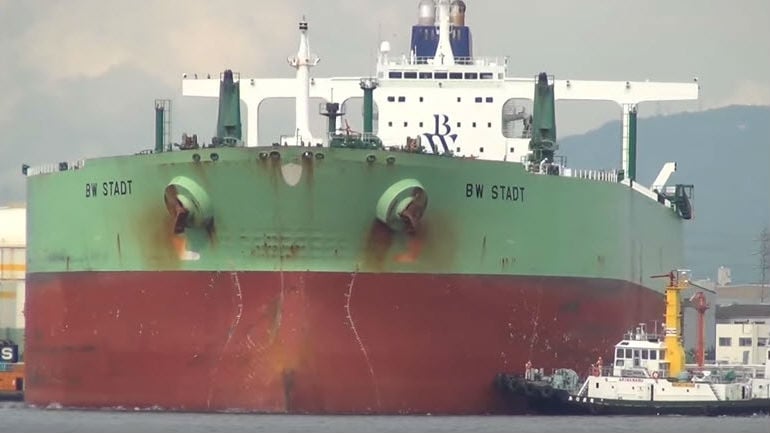The Week in Review: VLCCs and Christmas

Over the past year and a half, oil has lost more than 60 percent of its value.
That is great news for American car drivers, reports CNN Money. National average gasoline prices have dropped to $2.10 a gallon, down by 75 cents from a year ago.
It’s also good news for tanker owners. VesselsValue.com reports that market sentiment for tankers remains positive in contrast to other segments with the number of very large crude carriers (VLCCs) ordered this year reaching 64 (19,904,700 dwt.)
Deliveries continue. For example, DHT Holdings took delivery of a VLCC newbuilding from Hyundai Heavy Industries last week. The vessel DHT Jaguar is entering the spot market and is the first of a series of six VLCC newbuildings to be delivered to the company over the coming year.
Rates Holding Steady
Freight rates in key Asian trades for VLCCs, which have fallen from a five-year high hit in early October, are likely to hold steady around current levels as charter volumes match supertanker supply, market sources have said.
"It's steady as it goes," a European VLCC broker said last week. "Rates are not going anywhere. Everyone had been looking forward to a $100,000 a day VLCC market now, but I don't think it's going to happen," the broker said.
While breakeven costs vary from owner to owner, Robert Macleod, chief executive of top tanker owner Frontline, said the breakeven rate for each of its VLCCs was about $27,700 per day for the rest of this year.
VLCC rates from the Middle East to Japan hit $106,381 per day on October 5, the highest since June 2010, but they have since slipped to around $70,000 per day as more tankers are delivered and older vessels re-enter the market from maintenance and repair.
Traffic Jam
Earlier this month, ClipperData analysts described a tanker traffic jam off the Gulf of Mexico. The oil oversupply situation is so severe that tankers waiting to be offloaded are piling up off the U.S. Gulf Coast because there’s nowhere to put the crude. Floating storage of crude oil soared to nearly triple the normal level earlier this month, according to ClipperData, which tracks global shipments of crude.
There is a “massive cushion” of crude oil around the world, with global stockpiles sitting at a record three billion barrels, according to the International Energy Agency. While much of the glut is blamed on OPEC producers, U.S. output has also reached near-record U.S. levels.
Christmas
As a result, there looks to be more good news for American car drivers ahead, with CNN Money saying U.S. gasoline prices could slip below $2 by Christmas nationwide for the first time since 2009.

